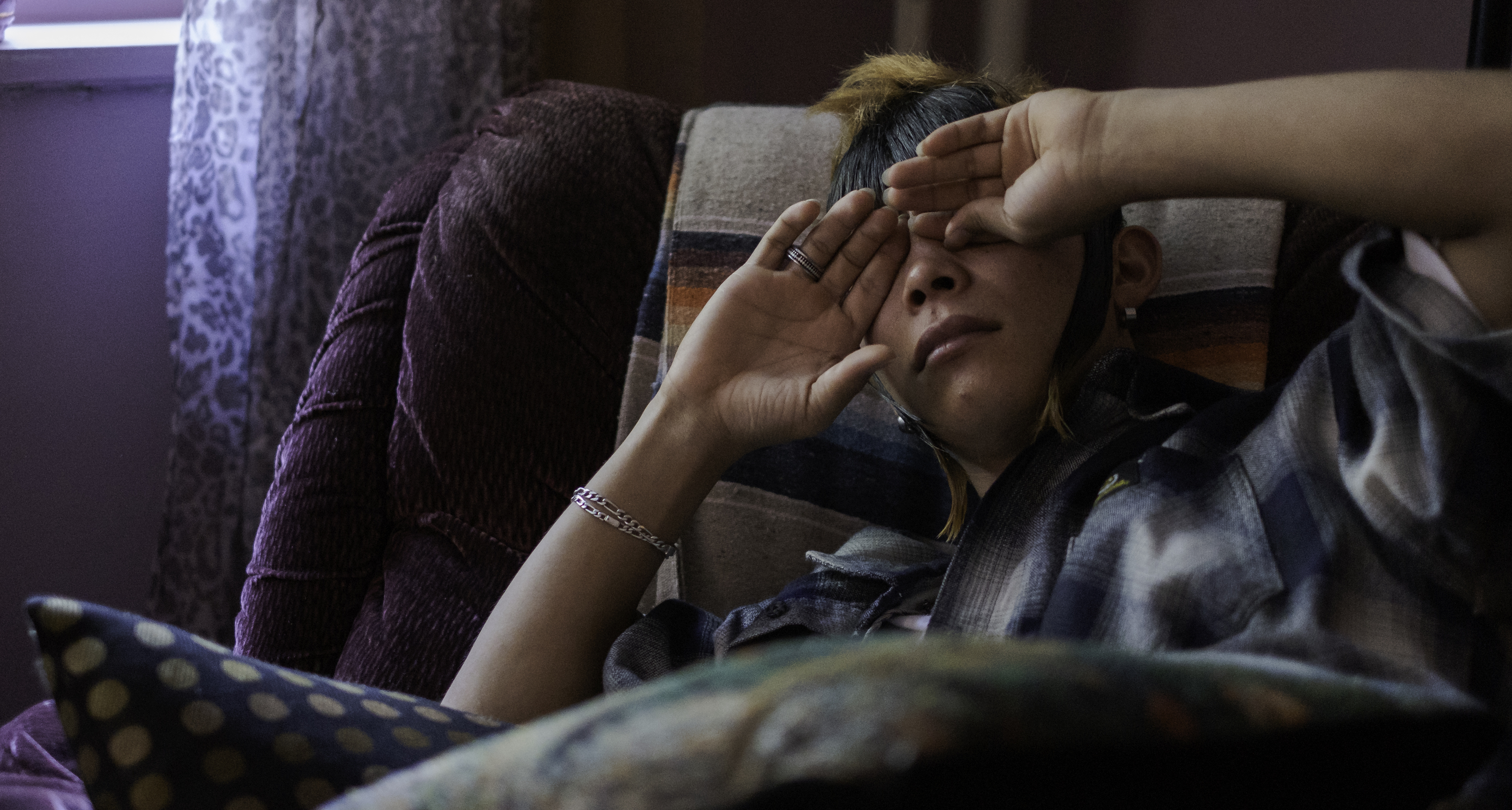Ya No Estoy Aquí (I’m No Longer Here,) the latest feature film by director and screenwriter Fernando Frías de la Parra, is now available on Netflix, and it shines a light on one of the most fascinating street cultures originated in Mexico: Monterrey’s Kolombianos, now known as Cholombianos.
After being the subject of media coverage and art exhibitions, the counterculture became internationally known mostly for its fashion, which is a wild take on West Coast cholo-inspired baggy clothes crowned by striking hair styles. But at the heart of Cholombianos lies a deep love and idealization of Colombian culture, especially its music.
Known by many in the area simply as “kolombias,” cumbia made its way to Monterrey in the ‘60s and reverberated in the city’s working-class neighborhoods, becoming a staple in sonideros up until this date and giving place to local reinterpretation of the South American genre, including cumbia rebajada.

This subgenre was accidentally created by Gabriel Dueñez when his turntable overheated in the middle of a lengthy session at a party, slowing down the music. Many of these versions only lived in sonideros’ catalogues, radio broadcasts and pirated cassettes and CDs sold at little stores around Monterrey, but have now found their way to the internet.
In I’m No Longer Here, main character Ulises and his Terkos gang are completely invested in cumbia, especially cumbia rebajada, as well as in vallenato. “If it’s slower it lasts longer,” says our protagonist on one scene. “I believe when it’s slower you feel it more.” Music is a central element throughout the movies, as it’s plagued with “colombias” in both their original and slowed-down forms.
As a tribute to I’m No Longer Here and the Cholombiano culture, ultimately extinguished by social stigma and Monterrey’s wave of violence in the mid-2010s, we compiled a list of cumbias from Colombia and Mexico you can dance or cry to, or even both.
1
Lisandro Meza - “Lejanía”
“Lejanía,” the 1992 song by El Macho de América Lisandro Mesa, perfectly encapsulates the homesickness explored in I’m No Longer Here. First cheerily performed by Sudadera as a rite of passage when becoming a Terko, the song reveals the heavy longing emotion of its lyrics little by little, and when slowed down, it’s an absolute tearjerker for any immigrant missing home.
2
Policarpio Calle - “Así se baila la cumbia”
Founding member of Los Corraleros de Majagual Policarpio Calle spent the last 40 years of his life in Mexico, so it’s no secret he became a beloved figure in the country. On one of the movie’s party scenes, Calles’ “Así se baila la cumbia,” is used by the Terkos members to show everybody how its done, as they tear up the dancefloor with their signature dance moves.
3
Andrés Landero - “Cuando lo negro sea bello”
Andrés Landero, the proclaimed King of Cumbia, penned “Cuando lo negro sea bello” as a moving reaffirmation of his African roots. “This sounds weird; it’s running out of batteries,” hilariously points out movie character Gladys when Ulises plays the song for her rebajada on his MP3 player, but it ends up becoming the backdrop to their relationship.
4
La Tropa Vallenata - “Cumbia Campesina”
As a fresh immigrant in New York City, Ulises struggles to connect with others due to cultural and language barriers, but he finds his own in front of his coworkers as he dances alone to La Tropa Vallenata’s version of “Cumbia Campesina,” originally by Los Corraleros de Majagual. The Monterrey ensemble inject some Mexican flavor and electric guitars to make this jam even more irresistible.
5
Aniceto Molina - “La Faldita Coqueta”
From El Campano, Colombia, Aniceto Molina’s career found its real success in El Salvador thanks to his biggest hit, a version of “La Cumbia Sampuesana.” In the movie, his track “La Faldita Coqueta” pops on the radio as los Terkos hang out on a cinder block structure. “I like it more slowed-down, but what the hell,” said Chaparra on the scene, and she might be on to something.
6
Alfredo Gutiérrez - “Prende la vela”
El Monstruo del Acordeón and three-time Rey Vallenato Alfredo Gutiérrez appears on I’m No Longer Here with his song “Prende la vela.” Ulises listens to it on his headphone while watching a group of friends skate down Roosevelt Avenue, and “Prende la vela” comes like a prayer for him to be reunited with his own crew.
7
Grupo Cañaveral - “Flor de mayo”
As Ulises struggles to find himself in New York City, he dreams of better times with his gang back in Monterrey, and “Flor de mayo” provides the perfect soundtrack. Performed by Humberto Pabón Olivares’ Grupo Cañaveral, this is originally a romantic love song, but here, it reads as a love letter to friendship.
8
Octubre 82 - “Quiero decirte hoy”
“Quiero Decirte Hoy,” by Monterrey’s Octubre 82, is a breakup song that hits harder when paired up with Ulises’ complicated relationship with his past and his future. It’s rebajada version really amplifies the feeling of things coming to an end, and it makes us thank the universe for that hot night that made Dueñez’s turntable malfunction and slow down those cumbias.




